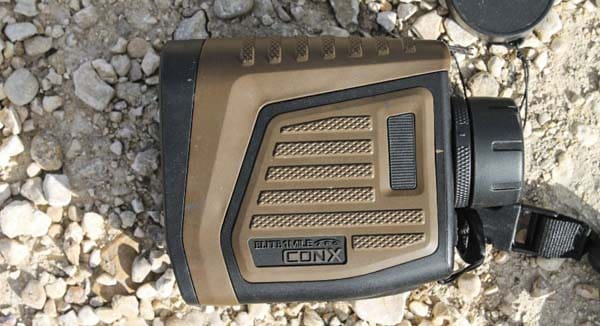
Roughly eighteen months ago, I made the decision to get more serious about shooting at longer distances. This decision coincided with my brief foray into precision rifle shooting at the Bushnell Brawl and my continued interest in the Run n Gun event each year in Pecos. What I quickly learned was that science was my best friend.
That led to a variety of ballistic calculators taking up space on my phone and computer. Those calculators require a great deal of data to do their job, but the data point that fundamentally matters most is the distance to the target. If you want to get serious about shooting further, you’ll eventually need to buy a rangefinder, and if you’re into the technology, the Bushnell Elite 1 Mile ConX might be the ticket.

Besides being a mouthful, the Elite 1 Mile ConX is a handheld 7X rangefinder that weighs in at 12.1 oz. It claims to range reflective targets out to one mile (hence the name) and soft fuzzy ones the size of deer out to 600 yards. It can be mounted to a tripod or slung around your neck, and takes up relatively little space in your hunting or gear bag.
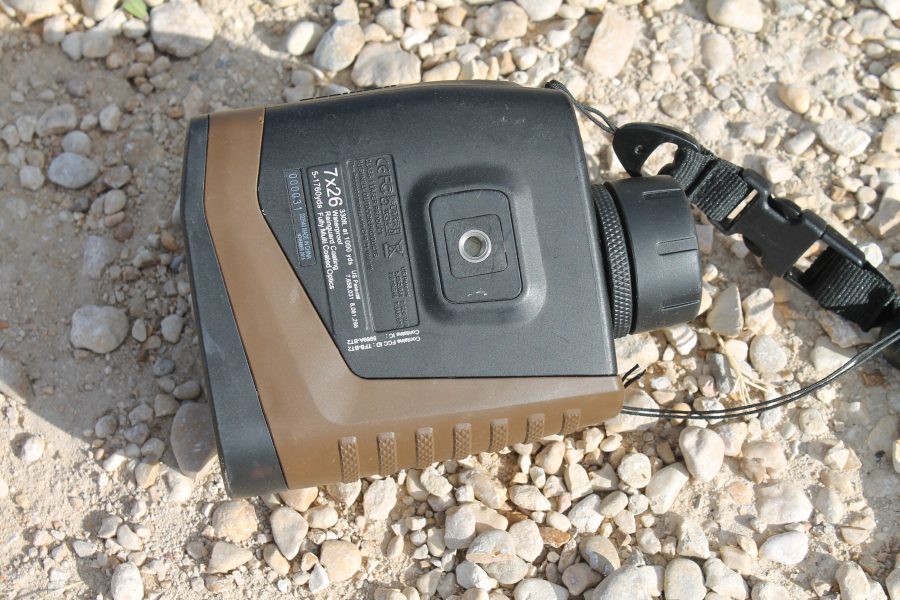
Out in the field, it competes with most of the $500-$1000 rangefinders I’ve used over the years. It ranges accurately and precisely in hot, cold, and windy conditions. I used it in a few rainy and humid days afield, and didn’t notice any major reductions in performance.
One of the first claims I wanted to put to the test was its ability to range reflective targets out to a mile. Unfortunately for me, the gate at the front of the family ranch is just about 1200 yards from the side of our barn which is made of sheet metal. The Bushnell unit ranged it accurately the first time and every time after that.
I was largely unsuccessful in finding reflective targets as far as a mile away until I headed out to Austin Gun Club which features steel targets at one mile. But I was unable to get the Bushnell unit to range the furthest targets, though it had no issues with big pieces of steel at distances under 1000 yards.

The other area where it seemed to struggle was picking up man-sized targets like IPSC torsos at the 800+ yard range. I’d usually have to hit them a couple times before it would register a value, but the value was always the same plus or minus yard or so. The Elite 1 Mile ConX features three different modes (BullsEye,™ Brush™ and Scan) that allow you to “tune” the rangefinder for various situations.
BullsEye – Geared for close-range use, this mode acquires the distances of small targets and game without inadvertently measuring background target distances. When more than one object is acquired, the closer of the two objects is shown on the LCD display.
Brush – Ignores the foreground, such as brush, boulders and tree branches, and provides distances on the LCD display to background objects only.
Scan – SCAN across the landscape while viewing a continuously updated LCD display of the distance between you and your target.

The Elite 1 Mile ConX did its best work when set in Brush mode and left there. Putting it in Scan mode was occasionally useful as well when ranging a few separate targets, especially those that were pretty far away. It would display an endlessly updated value for the range to the target and picking the most frequently displayed one seemed to result in the highest hit percentage on my part.
Connectivity
Where the Elite 1 Mile ConX differs greatly from the competition is its ability to connect to bluetooth enabled devices like smartphones and approved Kestrel devices. I happened to have both for the duration of my testing and found that this feature set enhanced my experience on the range and in the field.
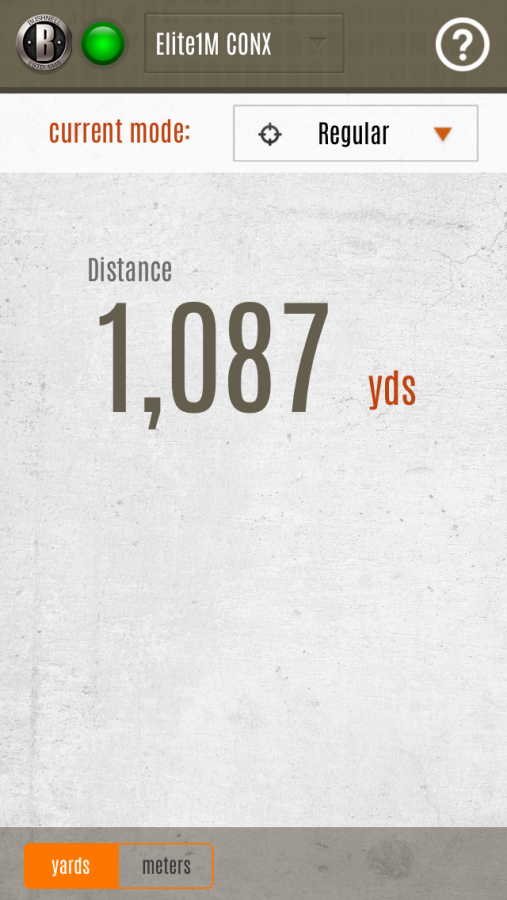
Bushnell App
Bushnell offers a free app for iOS 8.1 or later that is compatible with iPhone, iPad, and iPod touch. The app allows you to take complete control over the Elite 1 Mile ConX which offers a great deal more control than using the unit itself. That’s not a knock against the hardware side of things, but more broad commentary on a smartphone GUI interface compared to using two buttons and a single color display inside a handheld device.
I had no issues pairing the Elite 1 Mile ConX and my iPhone (9.3). Setup took less than 30 seconds and the connection is quite permanent. If the app is open and you have bluetooth enabled, pressing the ranging button reestablishes pairing between the two devices instantaneously. Once paired, the Elite 1 Mile ConX defaults to the last rangefinding mode and becomes a bit of a “dummy” device. Just starting ranging targets, and look to your smartphone for all the information.
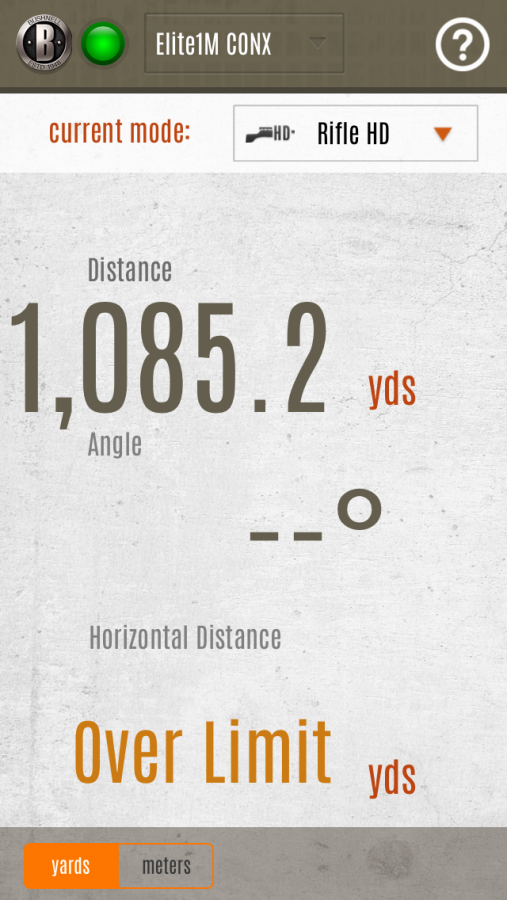
From the app, you can control all modes, set units for distance, and receive a heads up style display for the work your rangefinder is doing. The Elite 1 Mile ConX features an onboard inclinometer which feeds data either to the display inside the unit or to the app to display shot angle. The onboard processor will also calculate horizontal distance for display inside the unit or on the app. This is certainly helpful for those making steep uphill and downhill shots.

The Bushnell ConX app also features the ability to display ballistic profiles that either line up with eight preset curves or the ability to enter three custom curves. The eight preset curves are listed below and line up broadly with a variety of factory loads listed in the link above.
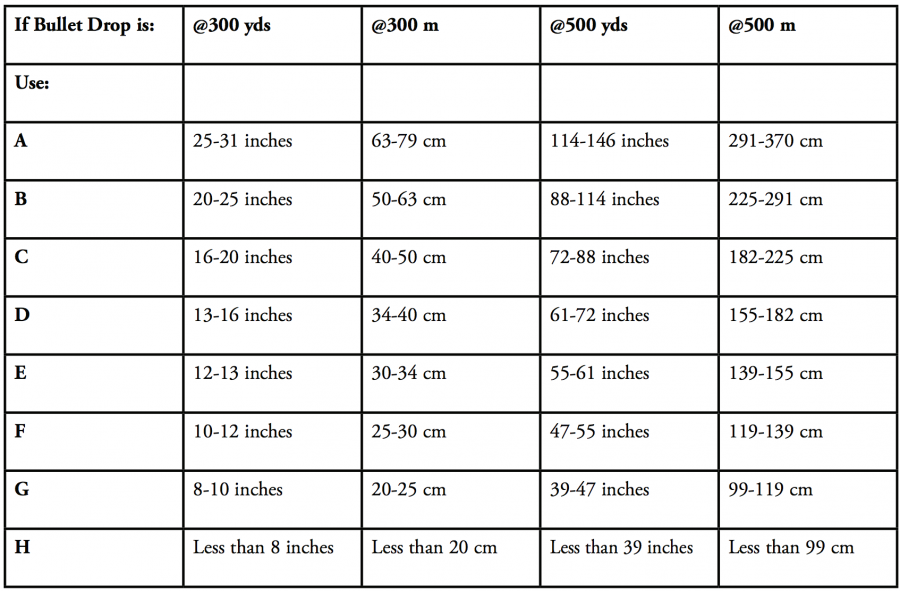
As you can see in the table above, these curve profiles are quite generous and in my mind, completely worthless. This sort of thing is gimmickry defined, and borders on unethical depending on how serious you take yourself. You might consider that a harsh criticism, but this is a product geared towards hunters and the fact that it can accurately range soft targets out to half a mile or so might lead the unwitting consumer to think that the numbers on the app are the elevation corrections they need to make. To be clear, this is an accurate rangefinder based on my testing, but the the logic built into the ballistics calculator is trash.
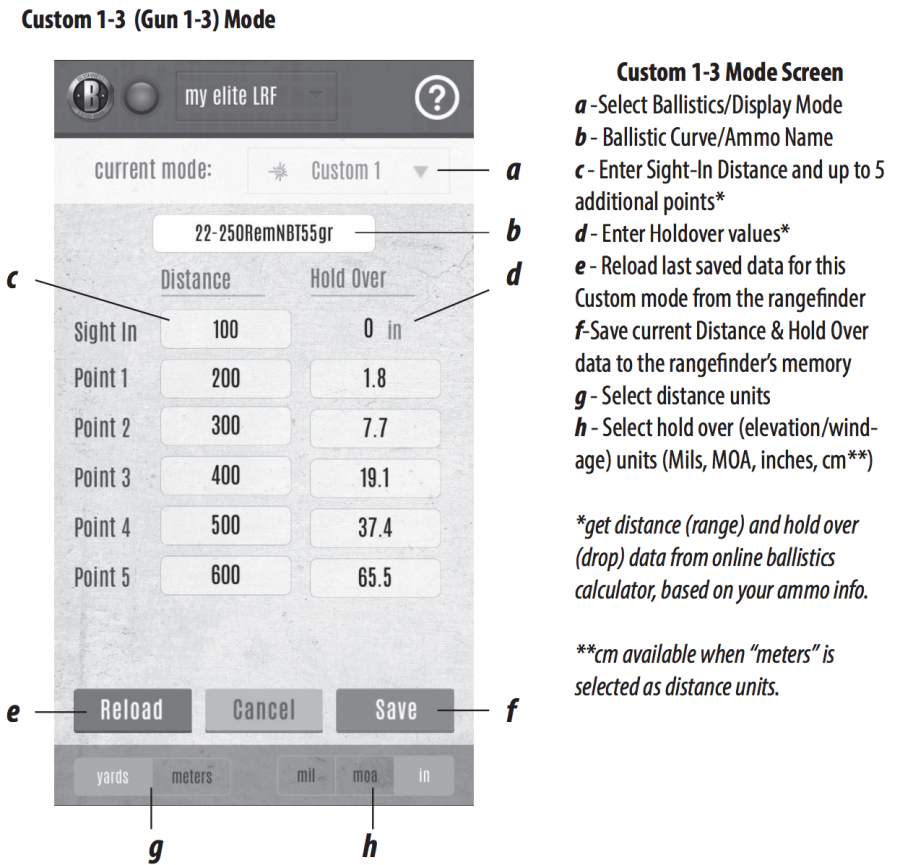
That said, if you’re unwilling or unable to bring a smartphone based ballistics calculator into the field, Bushnell provides the ability to create three custom ballistic profiles. These do not use bullet shape, size, or muzzle velocity like your typical calculator, instead choosing to plot various distances and the holdovers required at each point. This is still an imperfect system, but one that allows a higher degree of control over the information displayed to the app or inside the unit.
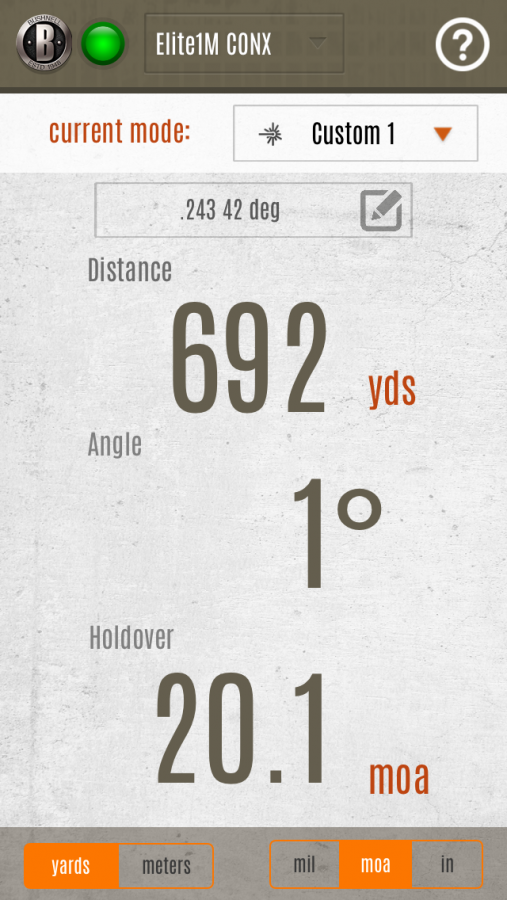
My recommendation for those looking to utilize just the Elite 1 Mile ConX in the field (sans smartphone) would be to load up three profiles for the same bullet and muzzle velocity but at three temperature ranges that correspond to your expected weather during your hunt. My rationale there is that temperature is likely to be the biggest variable likely to affect trajectory that you’d encounter on a hunt. Range and inclination are the other two but those are coverd by the device in your hands. In my case, I loaded up three profiles with temperatures at thirty degrees, fifty degrees, and seventy degrees, typical of a fall hunt in Texas. You’ll still be responsible for knowing your wind holds, and this is yet another area where the Elite 1 Mile ConX falls down a bit as it doesn’t allow you to store wind holds as part of the solution. This is something that the G7 BR2 manages to do, albeit at a much higher price point.
Kestrel Connectivity
I have a pending separate review of the Kestrel Sportsman and associated apps so I’ll reserve spending too much time discussing the finer points of that system, but I found that hooking up the Elite 1 Mile ConX to the Kestrel Sportsman was fairly easy, though it seemed to require a pairing after long spells of inactivity, unlike the smartphone based solution. I’ll put more of that on the Kestrel itself instead of the Elite 1 Mile ConX.
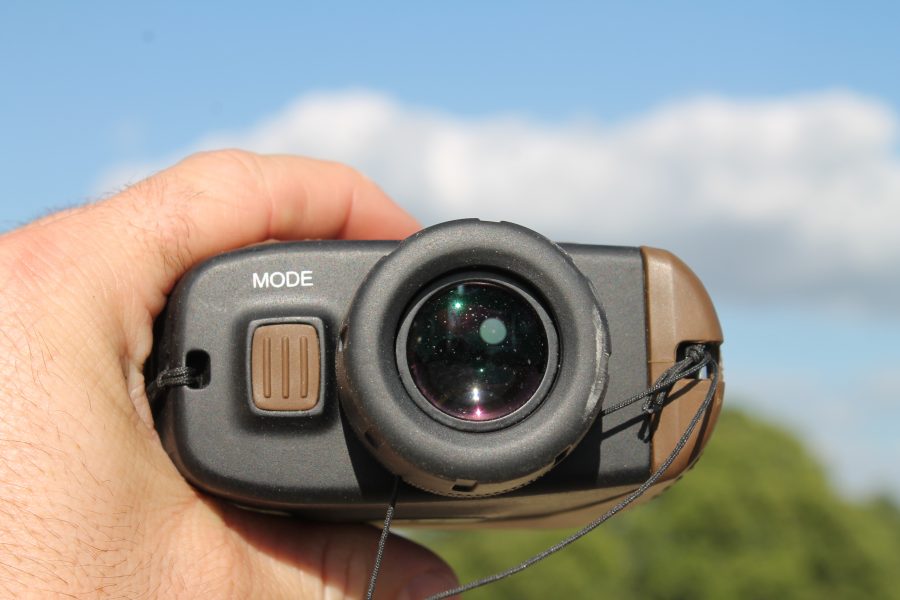
In the situation where the Kestrel is paired, the Elite 1 Mile ConX goes back to “dummy” status essentially sending data on range and inclination to the Kestrel. The Kestrel does the heavy lifting and spits out ballistic corrections on the display there. In an ideal shooting situation, you have the Kestrel mounted to a weather vane, the Kestrel app open on your phone or tablet, and the Bushnell in your hands to range targets.
I found the two devices to be quite complimentary, and for those looking to get really serious about long range shooting, you’d be hard pressed to find a better set of devices to take into the field.
Other Connectivity
At the time of this review, the only third party piece of hardware that will hook up to the Elite 1 Mile ConX is an approved Kestrel device. Similarly, the only smartphone based application that seems to support connectivity to the Elite 1 Mile ConX is Bushnell’s own app which is a great management tool, but a fairly worthless ballistics calculator.
When I received the Elite 1 Mile ConX, I spoke with the team at GeoBallistics to see if they had the ability to connect their super slick app with the rangefinder sitting in my hot little hands. The answer wasn’t entirely unexpected. They hadn’t gotten their hands on one yet, and weren’t sure how “open” the toolkit is for developers to use. Looking through the various bits of documentation out there, it doesn’t appear that Bushnell has made it easy for developers to start utilizing their hardware for third party applications. My hope is that things change over the next year so that developers can code their various applications around the outputs from the Bushnell device.
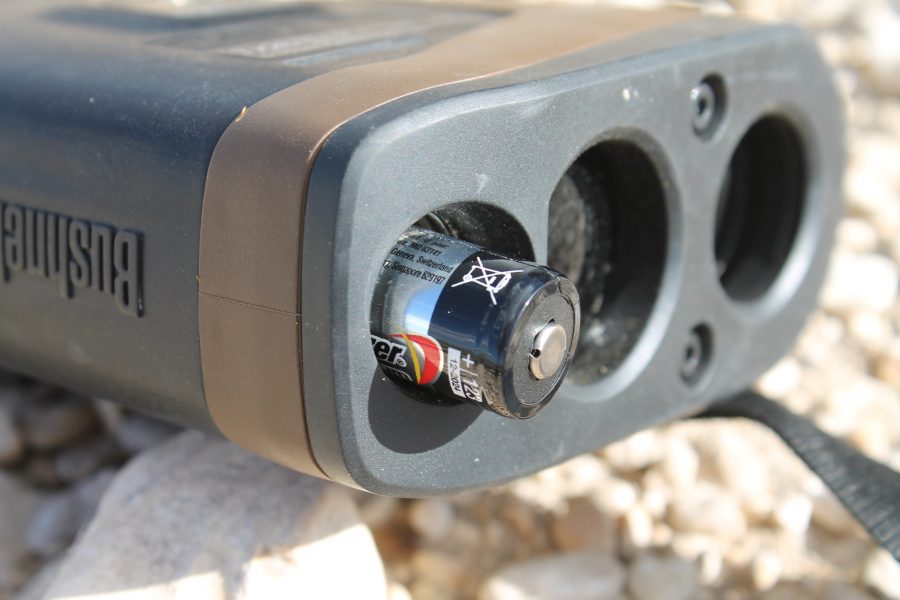
Durability and Battery Life
While I didn’t do any formal drop testing with the Elite 1 Mile ConX, I’m happy to report that several tumbles from backpack and truck bed heights on both concrete and dirt didn’t seem to phase it. The whole surface is covered in a rugged, rubberized coating that provides a good gripping surface in inclement weather.
I don’t have much to say on battery life as I plugged in the included Energizer CR123 about six months ago and haven’t done anything else since. There’s a battery life indicator in the display, but it still hasn’t come off full, so my initial impression is that the Elite 1 Mile ConX is a real volt sipper. The manual recommends replacing the battery every twelve months, but I fear that might be due to a sponsorship deal with Energizer based on my experience.

Specifications: Bushnell Elite 1 Mile ConX
- Magnification: 7X
- Objective Lens: 26mm
- Sizes:
- 1.7 x 5.1 x 3.7 inches
- 43 x 129 x 94 millimeters
- Weight:
- 12.1 oz
- 343 grams
- Battery Type: 3-volt CR123 (included)
- CONX Technology: Yes
- E.S.P. 2: Yes
- Rain-Guard HD: Yes
- Water/Fog Proof: Yes
- Range: 5-1760 yds.
- Reflective Ranging Performance: 1760 yards
- Tree Ranging Performance: 1200 yards
- Deer Ranging Performance: 600 yards
- Rangefinder Accuracy: +/- 1/2 yard
- Price: ~$700 in the wild
Ratings (out of five stars):
Fit, Finish, Build Quality * * * * *
For $700 you expect a rugged, waterproof rangefinder that feels well built. The Elite 1 Mile ConX doesn’t disappoint. It feels good in the hand, the seams on the housing body are smooth and clean, while the surface is free of defects. The lens is of good quality, though not nearly as clear as a dedicated scope or set of binoculars.
Ranging Ability * * *
Bushnell makes a pretty bold claim that this unit is capable of ranging targets out to a mile. My experience was that it was good on steel targets out to about 1200 yards, and then sporadic beyond that. I was never able to register any ranges at a mile. That said, it does pretty well on furry targets the size of deer out to about six hundred yards, in line with one of its stated specifications. I was able to range an average sized quarter horse at a touch over half a mile, and a small donkey at roughly the same distances. For those pursuing elk, moose, or bear, rest assured that the Elite 1 Mile ConX will happily range targets of the size you’re hunting out to at least a half a mile.
Third Party Integration * * * *
Debuting in December of 2015, the Elite 1 Mile ConX is still relatively new on the market. At the moment, the only third party tie-ins are with the Kestrel series of bluetooth enabled devices and Bushnell’s own app. My hope is that application developers will hop on board to integrate their ballistic software (if possible) with the Elite 1 Mile ConX. If Bushnell makes this difficult to do through some sort of locked down API, they’re shooting themselves in the foot.
Onboard Ballistics Calculators * *
Almost useless as it lacks the sort of precision required to take shots at animals at the reasonable limits of the ranges it can produce. The Elite 1 Mile ConX is capable of ranging a deer at six hundred yards, but you’d be wise not to use the data gleaned from the eight available profiles to take a shot. The only saving grace, and the reason this didn’t get one star, is the ability to load custom profiles that should allow you to rough it in a bit better based on real world field data. You should still pair this up with a dedicated ballistics calculator if you’re thinking of taking ethical shots at animals.
Overall * * * *
There’s simply nothing else on the market like it at this price point, and the execution is pretty good for a first generation unit. At $700, though, it’s pricey. The non bluetooth enabled version is about $200 less, but still has the garbage ballistics calculator. My preference would be to see a second generation unit that strips out the ballistics calculator and gives a solid range finder with bluetooth capability at a price point closer to $600 or so.
The integration with a Kestrel works well, but it seems that neither company could decide which device would be master or slave and defaulted to letting the Kestrel do the heavy work of displaying the ballistic solution. My ideal rangefinder solution would have the Kestrel pushing shooting solutions to the display inside the Elite 1 Mile ConX. In that model, the Kestrel would do the heavy processing based on the various environmental factors it collects while the Bushnell unit would act as the “client” side of the equation collecting range and inclination, sending it to the Kestrel, and providing a shooting solution inside the display. Time will tell if Bushnell goes in that direction.
Ultimately, if you’re not interested in third party technical integration, or fancy sounding onboard shooting calculators, the Elite 1 Mile ConX isn’t for you. You’ll be much better served by investing in a solid single function device that just ranges targets, and spending the money you saved on ammo, training, and a good ballistics calculator. However, if you like technology, you’ll be hard pressed to find a slicker gadget than the Elite 1 Mile ConX.




Thorough review. One question though regarding ranging out beyond 1200 yards – Did you hand-hold the device, or have it resting against a monopod, flat surface, something?
I’ve found that once you hit those sort of distances, having a steady aim on the target (ie, bi/tripod) makes all the difference in the world. I know the tech gets better everyday, so that may not matter anymore. But I am curious what you tried.
Great question! Off a stable rest
Thanks for the answer. So, likely there is something “money saving:” about either the optics (rx) or the illuminator (tx). Or maybe the alignment tolerances for the tx/rx are kinda sloppy so even though it illuminates the target, the receiver doesn’t get enough of the reflection to capture. 1 mile out, they have to be mounted rather precisely parallel to get it spot on. I would imagine that is an engineering challenge. Hardly insurmountable, but when meeting a budget…
Still, decent price-point, so perhaps they tested that ‘1 Mile’ claim with mirrors.
The only thing that matters for ranging performance for LR target shooters is beam divergence. So, what is it?
Unfortunately, it is not published any place that I can find.
Perhaps they’ll tell you if you call. I can waste time on the internet but I’m not allowed to make outgoing calls during business hours.
Isn’t the Bushnell arc, 500 in da wild, with the same laser capabilities, or greater? I think the arc might be one mile max not 3/4ths. If I’m right, your paying 200 bucks more for a lower power laser, but u get kestrel connectivity….
Thanks you sir, I read complete Reviews of Elite I Mile CONX its really great one, I am going to buy this rangefinder for golf purpose!
Thanks a lot!
Comments are closed.